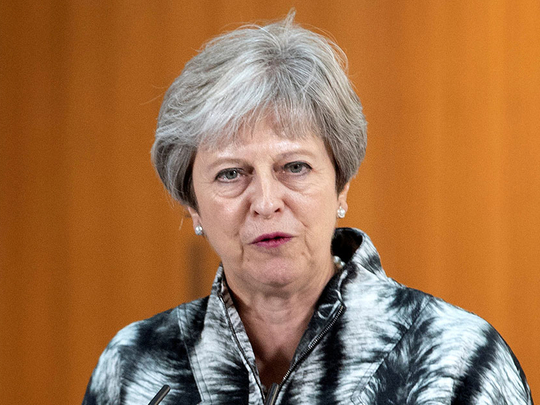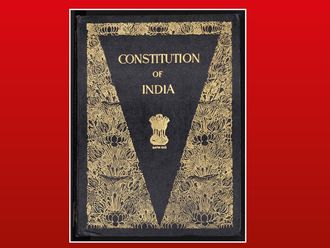
The British have long used the notion of divide and rule to get what they want. It’s a philosophy that stood the nation well, particularly during its two centuries of empire. How else, for example, could 100,000 Colonial Office mandarins keep control of, say, some 350 million across the subcontinent?
But that’s history. Right now, the politics of divide and rule has never been so evident — particularly when it comes to the government of Prime Minister Theresa May and its negotiations with Brussels.
No sooner had the Brits cast their ballots in this entire Brexit mess than the other 27 members of the European Union (EU) agreed that Brussels would do the talking for them, and there would be one voice speaking for all the capitals from Helsinki to Dublin, Lisbon to Warsaw. And Michel Barnier, the European Chief Negotiator for United Kingdom exiting the EU, would be the point man, with a clear line of negotiation, talks focusing on clear goals based on a common objective and strategy.
On the London side, it was like a sack of cats fighting it out. No one knew what they wanted, how they were going to get it, when it was going to happen, and where the UK would stand when it was all over. And things have only marginally improved since then, with a couple of the cats now out of the bag, but the questions still remain even though there are roughly three months left to reach a deal — as if that’s going to happen.
So that’s why May and her trusted Cabinet ministers at the Foreign Office and DExEU — the Department for Exiting the EU — have spent the past month or so doing the rounds of European capitals, trying to drum up support for her fatally flawed Chequers plan that, after two years of internecine catfights, was supposed to set a clear goal on what Britain wanted.
Fatally flawed? Absolutely.
The entire EU is based on four distinct and fundamental freedoms, it is a single market that guarantees the free movement of goods, services, capital and labour. And May’s Chequers plan tries to pick and choose which of those it wants, and reject those it doesn’t. It wants access to the single market, wants the free movement of goods and most services, certainly capital – but labour? Who needs more Polish plumbers or Lithuanian bricklayers?
May and her ministers are desperate to get a deal, and that’s why they have resorted to divide and conquer once more — Britannia did rule the waves by waiving the rules, after all.
May believes that she might be able to break the united front of the EU27 by appealing to the political leaders across the capitals, doing an end run around the EU Commission and Barnier.
From her point of view, with the clock running down and with little movement from Brussels, it’s worthwhile trying to seek support from its friends on the continent — so forget its closest neighbour on the island of Ireland.
Taoiseach (Prime Minister) Leo Varadkar of Ireland has been steadfast in holding London to a deal to keep the border between Northern Ireland and the Irish Republic as open as possible — and the EU27 are adamant on that. May, however, will do well to remember that no matter how the Brits and Irish may like to dress it up, there’s still a lot of lingering resentment and no small matter of some 800 years of colonial history too in the current affairs that sees Dublin for once in a position of strength against the interests of London. What’s more, Dublin holds a veto when it comes to any Brexit deal reached with the EU. Using it to sink any deal would, however, turn Anglo-Irish relations back to the darkest days of the Troubles, when Northern Ireland was on the brink of open civil war rather than just three decades of political violence and sectarian unrest.
May sat down with French President Emmanuel Macron to try and win support. In Austria too, there were entreaties. And her ministers topped up their airmiles accounts. Take Business Minister Greg Clark, for example, who has visited five separate capitals once the Chequers plan was published at the end of July.
Overall, though, May’s charm offensive is falling flat — more harm than charm, and just offensive as far as Brussels is concerned. Officials there have rejected the notion that May could hold direct talks on Brexit with individual leaders when the other 27 heads of state and EU meet in a summit in Salzburg on September 20. On the face of it, that meeting is supposed to deal with migration, but London will be pushing for a wider Brexit discussion. And you can bet that it will be trying to divide the 27 by offering support to the new right-wing, anti-immigrant government of Italy, while fishing for support from Hungary’s Viktor Orban, Poland’s Mateusz Morawiecki and Andrej Babis from the Czech Republic.
The reality though, is that even then there’s not enough support from these disaffected leaders to divert the EU from its strategy now despite the best — or worse — intentions of London. After all, there the simple and profound truth in all of this — the big grey elephant, trunk and tail and all — that this mess is of the Brits very own making.
That divide and rule policy that served their self-interests so well down the decades won’t work this time to get a Brexit deal. That’s not happening — and there isn’t enough time anyway.
There are two ways out of this right now.
Firstly, May can ask the EU to suspend or extend the two-year negotiating period — which would represent a huge political climb down for the PM herself, one that would probably spell the end of her tenure.
Or secondly, May can capitulate to growing calls for a second referendum on Brexit, or on a final deal or no-deal scenario. That’s a very risky strategy, one that could very well precipitate another grave and deep political crisis with a general election to follow.








